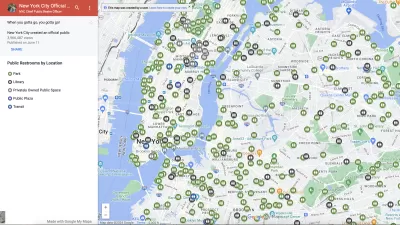Richey Piiparinen explores the "original sin" of the quest for urban “livability” - economic development - and examines what the pitfalls are when cities are designed for high-valued consumers rather than people.
Piiparinen wades into the debates generated by the use of what Kaid Benfield calls "overly familiar vocabulary," by taking issue with the use of "livability" as a goal for city development. Part screed against "Creative Class" urbanism and part reflection on the role of fantasy in city building and the recent backlashes to livability he observes in Portland, New York, and Chicago, his essay tries to address essential questions of affordability, gentrification, inequality, and economic development, without descending into a wormhole of semantics.
If we take Piiparinen's definitions of "livability", which he describes as "appealing to a select group of folks so as to form 'an attractive economic place'”, and livability (which is defined as "fit or suitable to live in or with"), as accurate, then the central question the essay raises seems to be whether city development based on the one must necessarily exclude the other.
He concludes his essay by suggesting that, "it’s time for city leaders and citizens alike to take stock in how cities are being made, and for whom the making is focused. In fact maybe it’s time to drop the 'livability' gimmicks that define Willy Wonka urbanism–or to squeeze 'the style' out of 'lifestyle' so as to expose the highest priority, the highest necessity: which is life."
"So, you wanna make your city 'hot'?", he argues. "Then cook the irons of affordable housing, mobility, education, and solid jobs."
Or, why not try do all of the above?
FULL STORY: “Livability” vs. Livability: The Pitfalls of Willy Wonka Urbanism

Alabama: Trump Terminates Settlements for Black Communities Harmed By Raw Sewage
Trump deemed the landmark civil rights agreement “illegal DEI and environmental justice policy.”

Planetizen Federal Action Tracker
A weekly monitor of how Trump’s orders and actions are impacting planners and planning in America.

The 120 Year Old Tiny Home Villages That Sheltered San Francisco’s Earthquake Refugees
More than a century ago, San Francisco mobilized to house thousands of residents displaced by the 1906 earthquake. Could their strategy offer a model for the present?

In Both Crashes and Crime, Public Transportation is Far Safer than Driving
Contrary to popular assumptions, public transportation has far lower crash and crime rates than automobile travel. For safer communities, improve and encourage transit travel.

Report: Zoning Reforms Should Complement Nashville’s Ambitious Transit Plan
Without reform, restrictive zoning codes will limit the impact of the city’s planned transit expansion and could exclude some of the residents who depend on transit the most.

Judge Orders Release of Frozen IRA, IIJA Funding
The decision is a victory for environmental groups who charged that freezing funds for critical infrastructure and disaster response programs caused “real and irreparable harm” to communities.
Urban Design for Planners 1: Software Tools
This six-course series explores essential urban design concepts using open source software and equips planners with the tools they need to participate fully in the urban design process.
Planning for Universal Design
Learn the tools for implementing Universal Design in planning regulations.
Clanton & Associates, Inc.
Jessamine County Fiscal Court
Institute for Housing and Urban Development Studies (IHS)
City of Grandview
Harvard GSD Executive Education
Toledo-Lucas County Plan Commissions
Salt Lake City
NYU Wagner Graduate School of Public Service





























